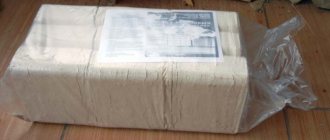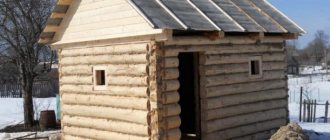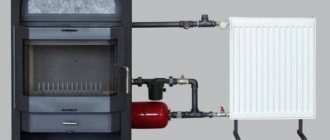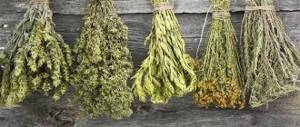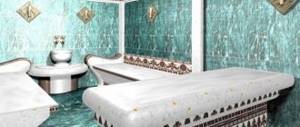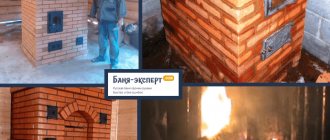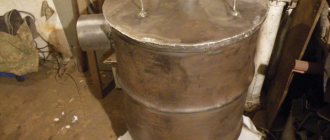Owners of private, non-gasified houses often think about how best to heat the stove. In most cases, it all depends on what type of fuel the heating system is designed for. First of all, you need to know that in order for the efficiency not to decrease, and the equipment itself to work longer than the declared operational life, you should use only high-quality materials, and it does not matter what you heat with: coal or wood.
Throwing fuel into the firebox
Coal and its types
At first glance, all coals are the same. But this is far from true. Coal contains carbon and some non-combustible impurities. As a result of the combustion of these substances, a lot of heat is released and ash is formed.
Different regions produce coal with different amounts of impurities. Fuel types are determined by specific criteria. Thus, depending on age, the presence of humidity and impurities, as well as the specific heat of combustion, the following are distinguished:
- lignite coal, which is characterized by a loose structure. It is used less in everyday life, and is more often used to ensure the functioning of power plants and other large enterprises. It refers to young coals (specific heat of combustion (SHC) less than 3 thousand kcal/kg);
- brown coal, which is also called subbituminous coal or black lignite. It is, as it were, a transition phase between lignite and coal. It is usually used in small or private boiler houses. It is a good quality raw material for the chemical industry (TCV from 3.1 to 5.1 thousand kcal/kg);
- hard coal, which is a hard, combustible, mineral resource, occupying an intermediate place between brown coal analogues and anthracite (UTS from 5 to 5.6 thousand kcal/kg);
- anthracite is the oldest and best of all varieties, which is characterized by black color, shine, and high specific heat of combustion (from 7 to 9 thousand kcal/kg). The rooms, heated with anthracite, are incredibly warm and cozy.
In which ovens can you burn coal?
Since, as a result of combustion, coal produces a higher temperature than wood fuel, stoves for combustible stone (black gold) are slightly different from wood-burning designs.
Although, you can burn with coal using an ordinary brick oven, but only with thickened walls and a 2-row grate. Plus, such a heating structure must be equipped with an additional hood that would not be connected to other channels.
There are designs with two water boilers in the furnace, with the help of which not only the room is heated, but also the brickwork is significantly cooled. Such devices require special supervision, since they must constantly contain water.
Plus, the dimensions of the grate and ash pan must be identical, otherwise there may be significant heat losses.
It will be interesting! Instructions on how to make a bell-type stove.
What is order
What is order and why is it needed? This is a detailed diagram according to which the furnace is laid; without it, work cannot begin. Even experienced stove makers first draw up an arrangement plan, and then begin laying. This order indicates the location of the bricks for each individual row, their sizes, places for installing doors, fireboxes and other grates.
An example of the arrangement of a brick stove.
The laying of stoves can be carried out using various methods, for example, undercut or with empty seams. If the first method is used, then after completion of the work the surface of the stove is not plastered, since the solution has already filled all the seams. Laying can be done in one brick, in ¾, in ½ - it all depends on the size and appearance of the structure.
The masonry rules provide for the use of only special oven bricks. The use of slotted, silicate, conventional fireproof, expanded clay is not allowed under any circumstances. The first row must be laid out dry, that is, no solution is used. It is necessary to clearly determine the direction of the future masonry; if necessary, the brick can be easily repositioned. At the same time, the position of each door and front wall is determined. The second row is laid out with mortar, followed by laying the corners of the future fireplace or stove. During work, plumb lines and string must be used so that the wall goes vertically upward and does not have displacements or deviations. The masonry rules are the same for any structure. The ash pit, firebox, and ash pit may be located in different places, but their fastening and reinforcement remains the same.
This masonry begins after the second row above the firebox of the future furnace. When laying the cladding, you must remember that a rigid connection between it and the stove cannot be made, since the temperature characteristics will be completely different and cracking is possible. When laying a chimney begins, you must remember to install a special valve; it must be smoothly and well regulated.
A set of measures before starting the fire
For the normal passage of the entire combustion process, it is necessary:
- carefully inspect the stove structure, starting from the firebox door of the stove and ending with the chimney. If cracks are found in the brickwork or chimney pipe, they must be sealed with a sand-clay mixture. Otherwise, the room will instantly fill with smoke, a large amount of carbon monoxide may appear, and small cracks will turn into large cracks and can actually damage the masonry;
- whitewash the pipe if you have not used the stove for a year or more;
- clean the chimney structure, including chimney channels, pipes from soot (if you have not used the stove for 3-4 months);
- clean slag and ash from the furnace. To avoid the appearance of dust in the room, combustion waste must first be filled with water, then raked out and taken outside;
- check for traction. To do this, insert a newspaper folded lengthwise into the firebox, set it on fire, and if smoke goes up the chimney, then everything is fine;
- use a dry cloth to wipe the outer part of the heating structure, otherwise an unpleasant odor will appear during the fire;
- Heat a little at a time 2-3 times a day, if the unit has not been heated for a long time, to prevent overheating of the stove.
What not to do?
When burning coal in a stove, the following is prohibited:
- use pieces of bitumen, plastic, construction and household waste as kindling material;
- leave the vent and combustion door open at the same time;
- When lighting, use gasoline, kerosene, alcohol, and other flammable substances.
It should be remembered that adults should constantly monitor the combustion process and under no circumstances transfer this function to children.
To ensure maximum heat transfer, it is necessary that the coal be in the form of not too large pieces. It is not recommended to use excessively wet fuel, since during combustion a lot of steam will be released from its surface, which will significantly reduce the efficiency of the combustion process.
Conclusion
Coal is the most common type of fuel. Its heat transfer is significantly higher than that of firewood, briquettes and pellets. Not all types of stoves can be heated with this product. To use it, you need a special firebox made of fireclay bricks or dense steel.
The process of laying, igniting and burning a corner will not require much effort if you follow the basic rules. But it will not be possible to heat the room with this type of fuel alone, since additional materials are required for ignition: paper, wood chips, small logs.
Coal combustion process
Let us remind those who have forgotten, we will teach those who do not know how to light a stove with coal. The following stages of firing a furnace with coal can be distinguished:
Advice! Do not rush to part with coal dust, as it is an excellent fuel.
- Prepare coal.
- Take crumpled newspaper or other paper and place it in the firebox. Ignition can also be accomplished using wood shavings.
- Place 10-12 wood chips, for example pine or birch, on top in the shape of a well or hut. It is necessary to ensure that air can circulate freely between the firewood and the paper, which will promote more efficient combustion.
- Set the newspaper on fire.
- Close the door and at the same time open the ash pan, with which you can regulate the combustion process.
- After the wood has burned, pour fine coal on top with a layer thickness of approximately 12-15 cm.
- After the fuel burns strongly, you can continue to use fine coal, or you can pour larger coal into the firebox in a layer 20-25 cm thick (depending on the dimensions of the combustion chamber).
Important! Until the coal begins to burn well, it needs to be stirred a little from time to time to improve air circulation and prevent the formation of a homogeneous sintered mass.
To prevent smoke from entering the room, during the next addition of fuel, you should close the vent with the door open.
Advice! If the metal stove is equipped with burners, then it is better to pour coal through them.
General recommendations
Loading and lighting the stove correctly is not just a sign of the homeowner's skill with the fireplace. In case of efficient kindling, the efficiency of the stove will be maximum.
Before lighting wood or charcoal, factors to consider include:
- furnace structure;
- its location;
- what and how much fuel is used for kindling;
- experience in handling the firebox.
How to light a stove with wood:
The first thing you need to do is clean the cast-iron grate (grate), designed for free access of air under the fuel, and also remove all the ash from the ash pan.
This is required to ensure that air flows equally evenly to all fuel. If you plan to heat the stove with wood, then they must be dry, of the same size, 8-10 cm in diameter. Good to know: the combustion temperature of different types of wood in a stove is in Celsius.
The best firewood is birch and oak. With their help you can quickly heat a room. It is necessary to fill the internal cavity of the stove with firewood, taking into account that there should be a distance of at least 20 cm between the top of the firewood and the ceiling of the firebox. It is necessary to lay all the firewood at one time, so as not to constantly open the firebox, adding fuel and thereby cooling the fireplace.
In order for the firewood to ignite, you need to set fire to a splinter, paper or birch bark, placing it all under the fuel. The use of gasoline or similar flammable substances is strictly prohibited, so as not to deform the firebox.
Possible problems and solutions
It happens that the stove seemed to light up normally, but other problems appeared during the fire. What to do, what measures to take to eliminate them? Here are the main problems and ways to get rid of them:
- The stove structure heats up unevenly, the temperature inside the stove for burning coal is low. There may be several reasons: low quality coal, a poorly closed fire door, the presence of cracks. To improve the quality of the fuel, it must be slightly moistened with water.
- A partial burst of flame is observed. This happens in two cases: they forgot to open the smoke damper or the natural draft decreases due to strong wind.
- The presence of a white flame and a hum in the firebox indicates too much draft. To fix the problem, you need to cover the vent a little.
- Smoke returns to the room. This is evidence of cracks in the heating system. Another reason is a large accumulation of soot in the chimney, due to which smoke cannot escape outside normally.
When burning coal, you must adhere to operating and fire safety rules. It is not difficult. And if you heat it correctly, the stove will bring warmth, homeliness, joy and comfort to your family. Enjoy this family hearth for many years to come!
Advice! Do not rush to part with coal dust, as it is an excellent fuel.
Why might there be smoke?
Even if the stove is heated correctly, plumes of smoke may form and enter the home. More often, this is caused by low quality coal. However, the causes of problems are:
- Clogged chimney or ducts.
- The appearance of cracks and holes in the masonry. The draft and smoke temperature are significantly reduced.
- Destruction of internal masonry or well.
If ignition is carried out in a cold firebox, smoke may appear. Soot will begin to form if several heating devices are connected to the chimney. To prevent carbon monoxide, smoke dampers must be installed.
